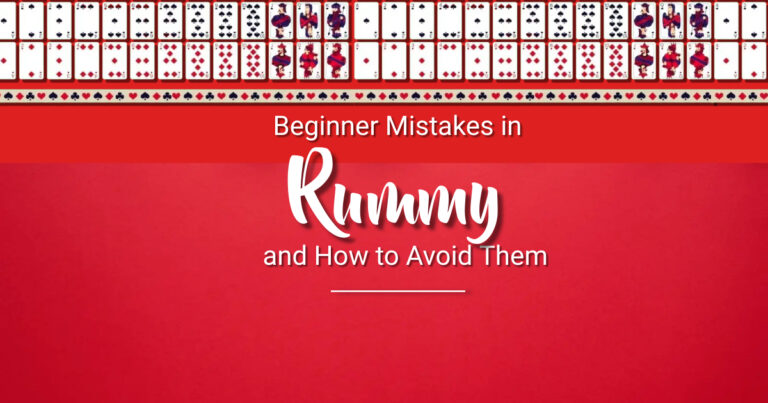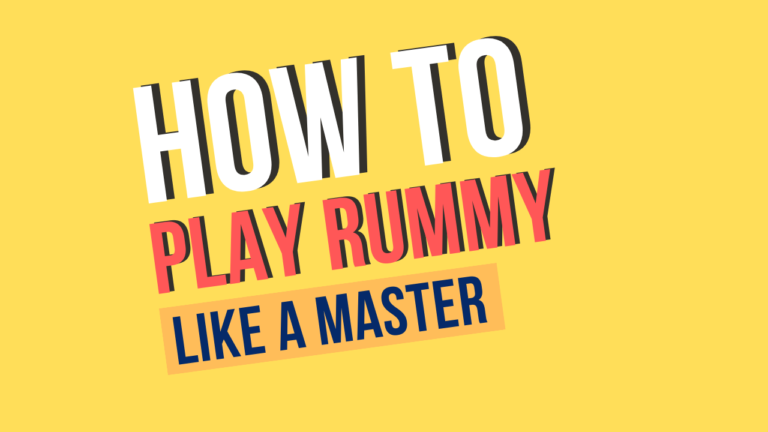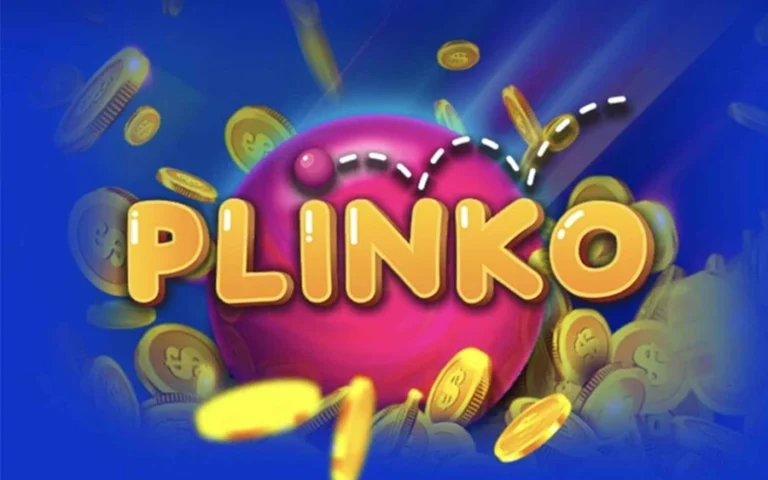How to Read Opponents’ Behavior in Teen Patti and Rummy
Reading opponents’ behavior is an essential skill for players of card games like Teen Patti and Rummy. These popular games are not just about luck and the cards you’re dealt but also about understanding the psychology and behavior of other players. By interpreting how your opponents act, you can make more informed decisions, outplay others, and maximize your chances of winning. In this guide, we’ll explore practical strategies to read opponents’ behavior in both Teen Patti and Rummy games, including signs to watch for, psychological cues, and techniques to predict other players’ moves.

Understanding Behavioral Tells
In card games, a “tell” is a change in a player’s behavior or demeanor that gives clues about the strength or weakness of their hand. Tells can be verbal or non-verbal and often reveal information that experienced players use to their advantage in games like Teen Patti and Rummy. While these signs might not always be intentional, they can provide valuable insights into an opponent’s thinking process.
Common Tells in Teen Patti and Rummy
- Betting Patterns
- One of the most significant tells in card games is the pattern of a player’s bets. If a player consistently bets aggressively, it may indicate a strong hand. Conversely, if they tend to bet small or fold often, they might have weaker hands. In Teen Patti Stars, aggressive players may try to bluff by raising the stakes even with a mediocre hand to scare off others. Recognizing these patterns can help you decide when to call, raise, or fold.
- Body Language
- Players often reveal subtle clues through their body language in Teen Patti and Rummy.
- For instance, a player who is relaxed may have a strong hand, while someone who seems tense might be bluffing. Watch for small physical signs like fidgeting, leaning forward, or changes in breathing, which can signal how confident or anxious someone feels about their hand.
- Facial Expressions
- Microexpressions—brief, involuntary facial expressions—can betray a player’s emotions. Even a seasoned player might show slight signs of frustration, excitement, or nervousness. Look for changes in facial color, eye movements, and mouth expressions, as these could indicate how strong or weak a player’s hand is in Teen Patti and Rummy.
- Speech Patterns and Tone
- The way a player speaks can also provide valuable information. If someone is unusually quiet or chatty, it could be a sign of nervousness or confidence. Changes in speech speed or tone may also indicate that they are trying to mislead you or are genuinely uncertain about their hand.
Reading Opponents in Teen Patti
Teen Patti is a game of skill, luck, and psychological warfare. Understanding your opponents’ behavior can significantly enhance your game strategy. Here are some techniques to read your opponents in Teen Patti:
- Bluff Recognition
- Bluffing is a common strategy in Teen Patti, where players may bet aggressively despite having weak hands. Recognizing a bluff is crucial. Pay attention to how frequently an opponent bluffs, as this can provide insights into their overall strategy in Teen Patti and Rummy. If they tend to raise the stakes often without backing it up with strong cards, they are likely trying to force you into folding. Additionally, look for inconsistencies in their behavior. If they normally bet cautiously but suddenly become aggressive, it might be a bluff.
- Observing Patterns of Aggression
- Some players adopt a highly aggressive style, while others are more conservative. By observing these patterns, you can anticipate their moves. If a player who usually plays conservatively suddenly starts raising bets, they might have a strong hand.
- Conversely, an aggressive player who suddenly checks or bets cautiously may be trying to lure you into a false sense of security in Teen Patti and Rummy.
- 4o mini
- Identifying Fear of Show
- In Teen Patti, when players are reluctant to show their cards during a showdown, it could indicate that they are bluffing or not confident about their hand. Players who frequently fold before a show may be avoiding risk because their cards are often weaker.
- Watching for ‘See’ Reactions
- The act of ‘seeing’ in Teen Patti, where a player opts to look at their cards, can reveal information. A player who immediately looks at their cards may be less confident in playing blind, suggesting that they don’t feel strong about their hand. On the other hand, players who continue playing without looking at their cards may have a solid strategy or are trying to appear confident, a tactic seen in both Teen Patti and Rummy.
Reading Opponents in Rummy
Rummy requires a mix of strategy, memory, and reading opponents. Since it involves discarding and picking up cards to form sets or sequences, the game provides different behavioral insights than Teen Patti, making it one of the variants for all ages. Here’s how to read opponents’ behavior effectively in Rummy:

- Card Discards and Picks
- Observing which cards an opponent discards and picks up from the open pile can give you clues about the sets or sequences they are trying to form in Teen Patti and Rummy. If a player picks a card from the open pile, it usually means they need it for a particular set. Pay attention to these moves, as they can help you guess which cards they might need and which they are unlikely to pick.
- Discarding High-Value Cards Early
- In Rummy, if a player starts discarding high-value cards like face cards or tens early in the game, it could indicate that they are trying to lower their points quickly in anticipation of a loss. This strategy is often used by experienced players who sense they are behind. Conversely, players holding onto high-value cards might be trying to complete a particular set or sequence.
- Delaying the Declaration
- Players who delay declaring their hands even when they seem to have picked up useful cards in Teen Patti and Rummy might be trying to improve their hand further or are uncertain about their existing sets. An experienced opponent may use this strategy to throw you off by appearing to be in a weaker position.
- Behavior When Drawing a Joker
- Jokers are crucial in Rummy because they can replace any card to complete a sequence or set. Players who pick up a joker from the open deck often display subtle satisfaction or relief. If a player appears to get more confident after drawing a card, they might have picked up a useful joker or a needed card for their set.
General Tips for Reading Opponents
- Observe the Overall Playstyle
- Different players have different playstyles—aggressive, passive, tight, or loose. Understanding a player’s general style in Teen Patti and Rummy can help you predict their behavior and adjust your strategy accordingly.
- For instance, a tight player who rarely takes risks may only raise with a strong hand, whereas a loose player may bet more often and take more chances, often employing bluffing in Teen Patti.
- 4o mini
- Pay Attention to Reactions After Losing or Winning
- Players’ behavior after losing a big hand or winning can offer valuable insights. Some players might become more conservative after a significant loss, while others may become reckless. Similarly, players who win big may feel overconfident and make risky moves.
- Use Deception to Your Advantage
- Just as you are reading your opponents, they are likely trying to read you, especially in games like Teen Patti and Rummy. To avoid giving away too much information, mix up your play style. Don’t always bet in the same way with similar hands, and occasionally throw in a bluff to keep your opponents guessing.
- Limit the Use of Predictable Patterns
- Avoid falling into predictable betting patterns that opponents can pick up on. If you always raise with strong hands and check with weak ones, better players will catch on quickly. Being unpredictable keeps your opponents off balance and makes your strategy harder to decipher.
Conclusion
Reading opponents’ behavior in Teen Patti and Rummy is an art that combines psychology, observation, and strategy, reflecting the rich Indian gaming culture. By paying attention to betting patterns, body language, card picks, and other subtle cues, you can gain an edge over your competitors. Keep in mind that while these strategies improve your ability to read others, they are not foolproof, as experienced players may deliberately try to mislead you. Practicing these techniques and learning from every game will help you refine your skills over time, enabling you to make better decisions and outsmart your opponents more effectively.







